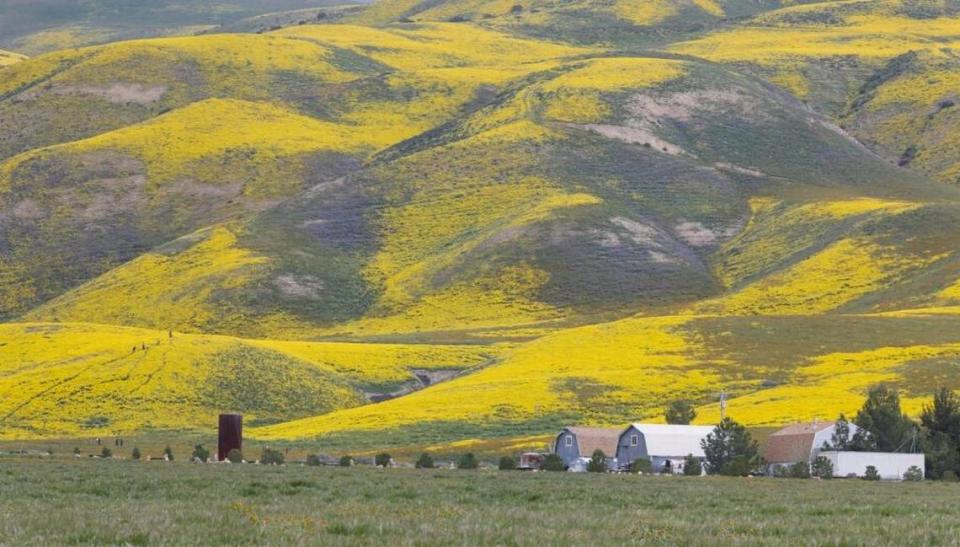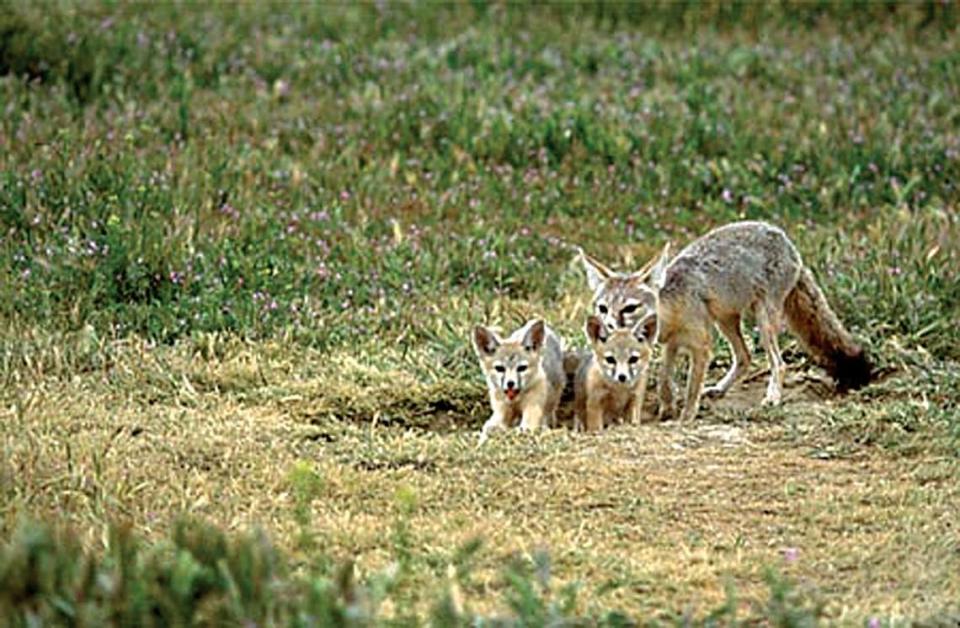Carrizo Plain oil wells to be plugged — is it ‘the beginning of the end’ of drilling there?
Nearly a dozen oil wells left idle for years in the Carrizo Plain National Monument in San Luis Obispo County are set to be plugged and abandoned as part of a settlement agreement reached Friday between the federal government and environmental groups.
And environmentalists hope it’s a sign of more shutdowns to come and “the beginning of the end of oil extraction in the Carrizo Plain.”
The agreement arose out of a December 2020 lawsuit filed by the Los Padres ForestWatch and the Center for Biological Diversity. The groups had disputed a May 2020 approval of a new well to be drilled on an existing well pad and construction of a pipeline on the U.S. Bureau of Land Management lands.
That approval had found that the new oil well would not cause any additional significant impact to the environment, a claim that the environmental groups disputed. They said the federal government downplayed the new well’s greenhouse gas emissions and the impact those emissions have on the local environment, especially since the management plan for the Carrizo Plain National Monument calls for the eventual end of oil drilling there.
The application to drill the new well expired in May, and owner/operation E&B Natural Resources Management Corp. did not renew.
The 11 existing inactive wells that will be plugged and abandoned are located in the southwestern part of the national monument, along Highway 166 west of New Cuyama.
“This agreement forges a new era for the Carrizo Plain National Monument and begins what we hope will be a complete phase-out of oil drilling in this protected area,” ForestWatch Executive Director Jeff Kuyper said in a written statement. “The Biden administration did the right thing in agreeing to take these important first steps toward restoring this treasured landscape.”

Twelve idle oil wells at the site had been found by the Bureau of Land Management in 2013 as needing to be plugged, abandoned or returned to production. However, no such actions had been taken on the wells, save one that is now a water injection well, according to the Center for Biological Diversity.
As part of the settlement agreement, the Bureau of Land Management will prepare an environmental assessment to analyze full restoration of the 11 idle oil well pads. It may also analyze removal and restoration of roads leading to the oil drilling sites, electric transmission lines and other infrastructure formerly used for the drilling activities.
That environmental assessment, once the draft version is published, will allow the public a 30-day comment period.
Three of the 11 idle oil wells will be plugged and abandoned by the end of this year. By 2027, the remaining eight must be plugged and abandoned, according to the settlement agreement.
Aside from the eleven idle wells in the settlement agreement, Ileene Anderson, a senior scientist at the Center for Biological Diversity, said her organization aims to work with the federal government to address the nearly two dozen other idle wells in the Carrizo Plain National Monument. This may include finding federal or state money to fund the necessary restoration work, she added.
Another nine active wells are currently operating inside the monument in two oil fields — Russell Ranch and Morales Canyon — and are “reportedly reaching the end of their useful life,” the Center for Biological Diversity and ForestWatch said in a news release.
“It’s exciting to see the beginning of the end of oil extraction in the Carrizo Plain. This is a place for wildflowers and kit foxes, not oil wells,” Anderson said in a written statement. “The agreement will benefit all the rare plants and animals of this stunning landscape. And it’s one more step toward leaving a livable planet to future generations by stopping fossil fuel extraction.”


